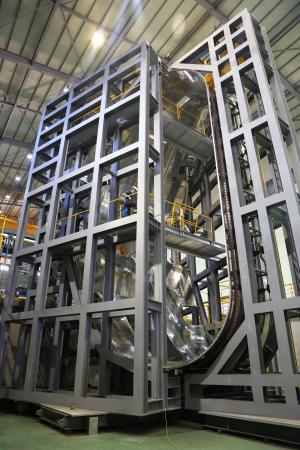First 23 panels fit like clockwork
During fitting trials in Korea, 23 stainless steel panels have been successfully pre-assembled into the first sector of vacuum vessel thermal shield.
The purpose of the pre-assembly test was to demonstrate the feasibility of assembling the same sector of thermal shield at ITER. The test jig and fixture design (inboard frame, outboard frame) and the clamping conditions were identical to those that will be called into action as part of vacuum vessel sector sub-assembly activities in the ITER Assembly Hall beginning next year on the sector sub-assembly tool.
Each of the nine 40° sectors of vacuum vessel thermal shielding consists of 23 stainless steel panels, each with its own welded cooling tube. The pre-assembly test for sector #6 took place in four steps:
- Jig assembly of the outboard 10° segment, with dimensional inspection
- Jig assembly of the outboard 20° segment
- Jig assembly of inboard 40° segment, with dimensional inspection
- Jig assembly of inboard 40° segment and two outboard 20° segments, with dimensional inspection
Dimensional inspection of the shell was performed for the sub-assembled segments by 3D laser scanning.
Observers were also able to verify the tight tolerances (2 mm) that are required for the 1,800 bolt holes of the sector. "Nine hundred bolts and corresponding holes were verified and all the flanges were assembled well without gaps," says Dongkwon Kang, ITER technical responsible officer for the thermal shield. "This gives us confidence that there will be no critical interface issues for the assembly and the operation of the vacuum vessel thermal shield at the ITER site."
Vacuum vessel thermal shield sector #6 will now be dismantled for silver coating before being re-assembled into inboard and outboard segments for shipment to ITER. All is on schedule to meet the ITER Council milestone for delivery of the thermal shield sector by April 2019.



